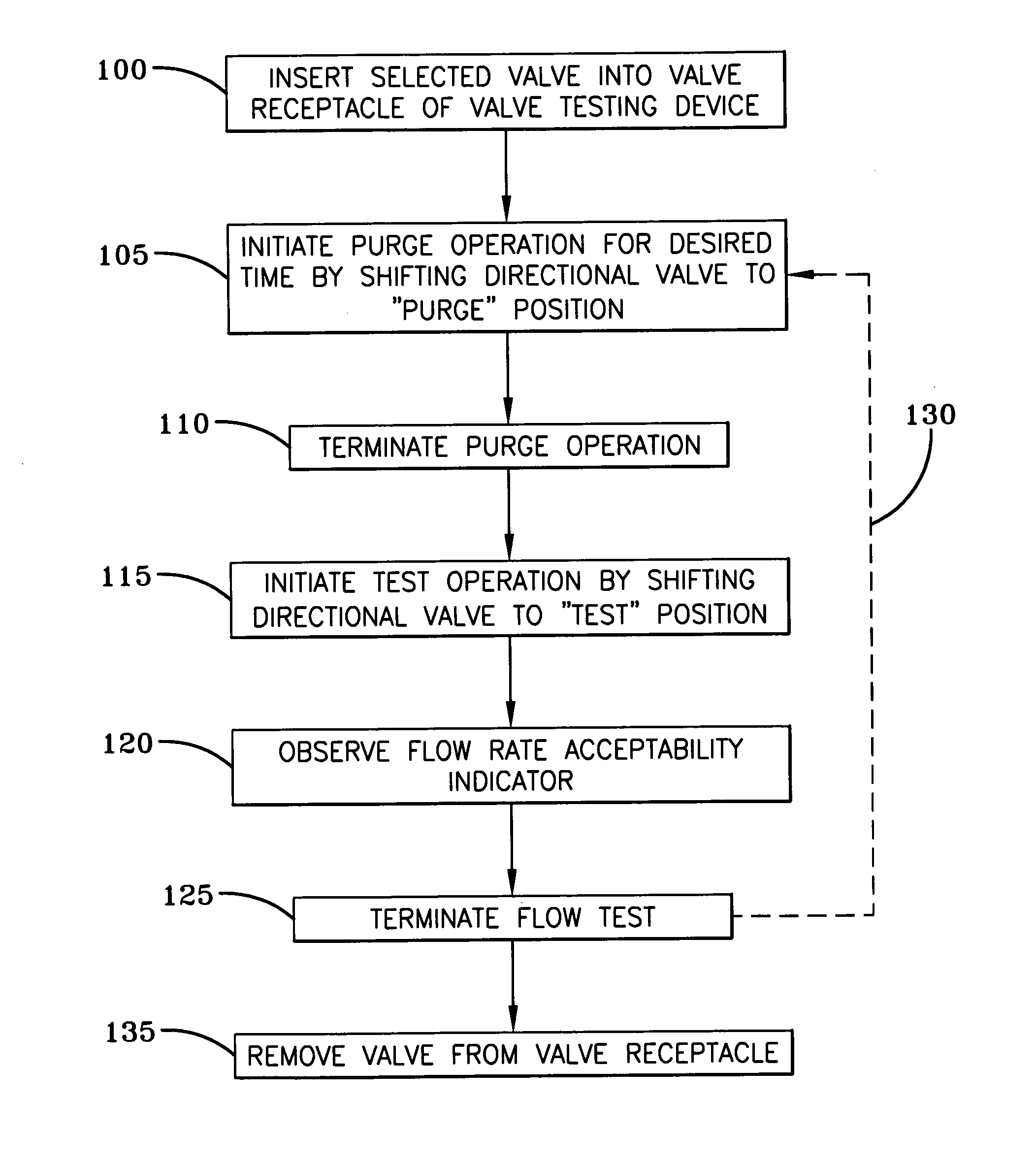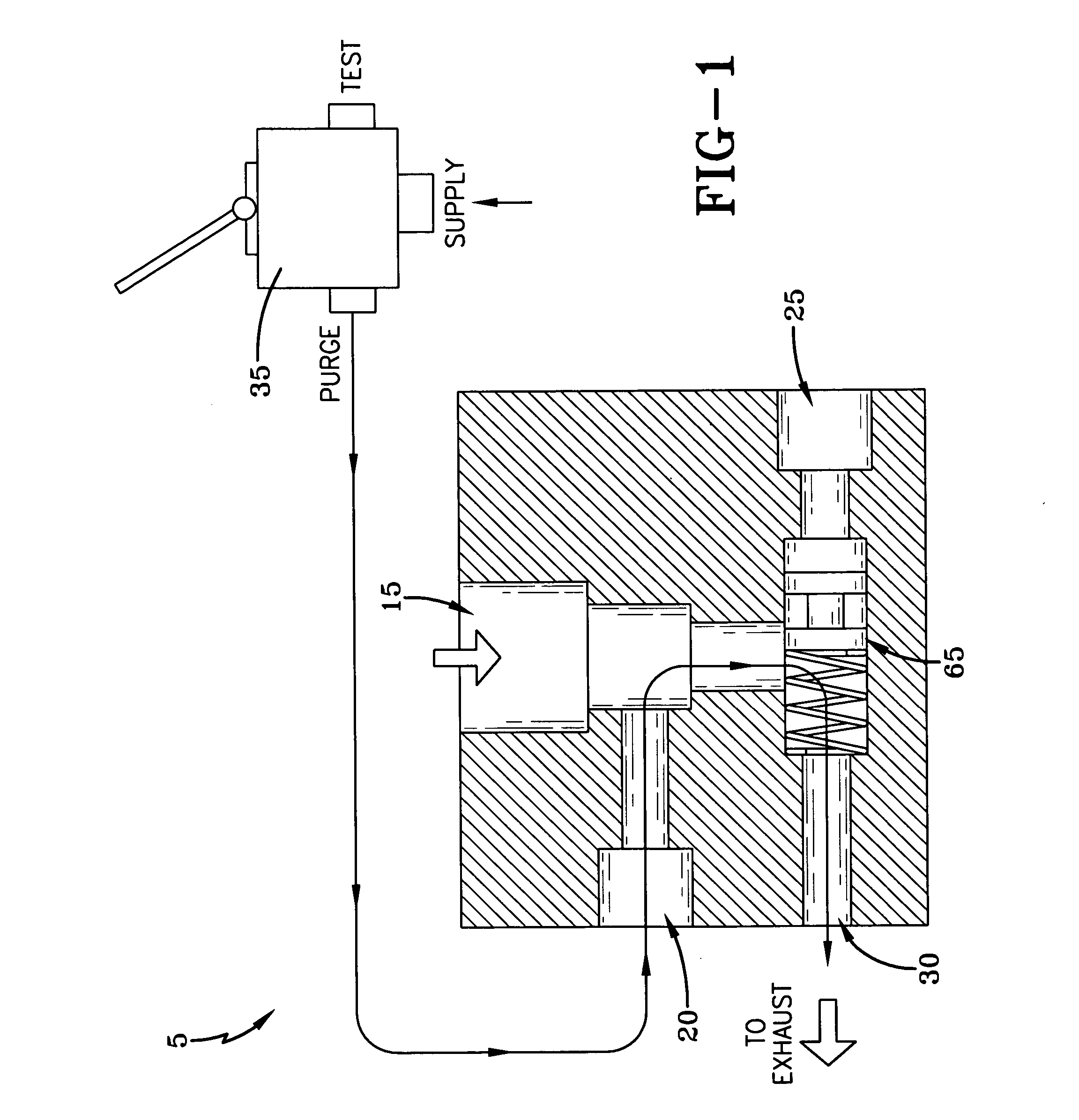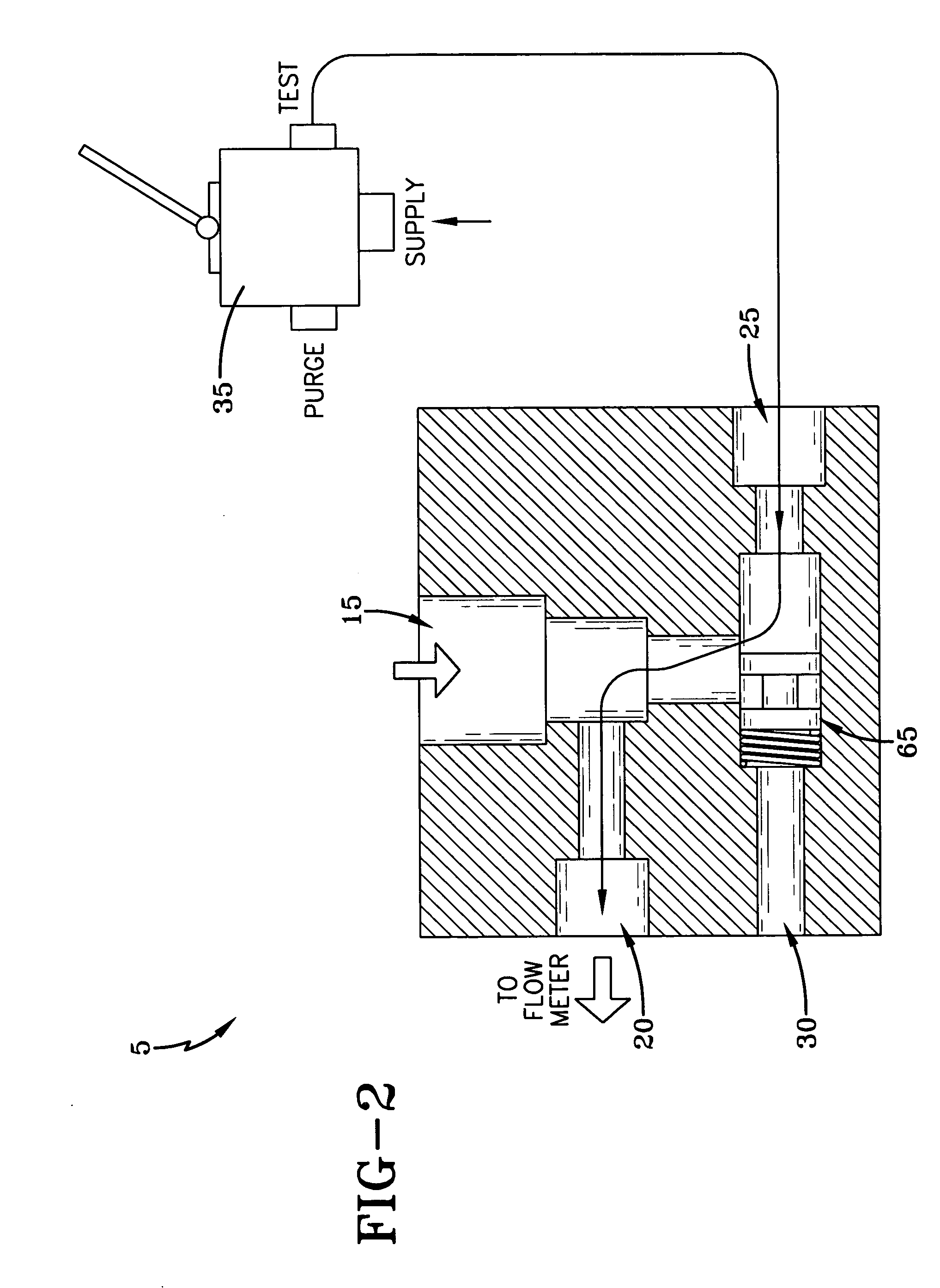Valve testing device having integrated purge circuit and method of valve testing
a technology of purge circuit and valve testing device, which is applied in the direction of fluid tightness measurement, liquid/fluent solid measurement, instruments, etc., can solve the problems of inoperable valves, one or more pieces of debris may be lodged on the spool, and the valve may experience operational problems, so as to improve the ability of users to process valves and rebuild transmissions. , to achieve the effect of quick and efficient testing, reliable determination of whether a valve is fit for reus
- Summary
- Abstract
- Description
- Claims
- Application Information
AI Technical Summary
Benefits of technology
Problems solved by technology
Method used
Image
Examples
Embodiment Construction
)
[0020] An exemplary embodiment of a valve testing device 5 of the present invention is represented by the schematic diagram of FIGS. 1-2. The actual testing device 5 may take on many forms, such as a form similar to the portable unit shown in U.S. Pat. No. 6,038,918, for example. The testing device 5 may also be more simplistic in its design and construction, and may or may not be transportable. For example, in contrast to the device shown in U.S. Pat. No. 6,038,918, a testing device of the present invention may be securely mounted to a workbench or other test stand where valve testing is to take place.
[0021] In any event, a valve 10 (see FIG. 3) is preferably received and retained in a valve receptacle 15 of the testing device 5 during testing. The valve receptacle 15 may be a bore of proper size and shape to receive the valve, and may be placed in a block of metal, plastic, or some other material, for example. A purge port 20, a test port 25 and an exhaust port 30 are all shown ...
PUM
 Login to View More
Login to View More Abstract
Description
Claims
Application Information
 Login to View More
Login to View More - R&D
- Intellectual Property
- Life Sciences
- Materials
- Tech Scout
- Unparalleled Data Quality
- Higher Quality Content
- 60% Fewer Hallucinations
Browse by: Latest US Patents, China's latest patents, Technical Efficacy Thesaurus, Application Domain, Technology Topic, Popular Technical Reports.
© 2025 PatSnap. All rights reserved.Legal|Privacy policy|Modern Slavery Act Transparency Statement|Sitemap|About US| Contact US: help@patsnap.com



